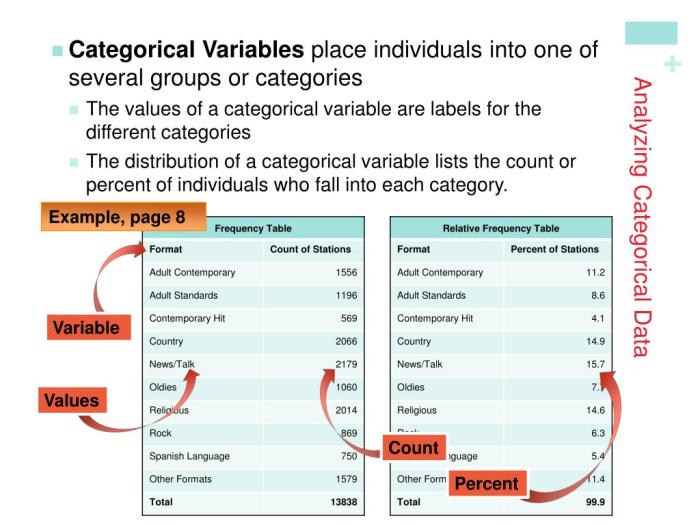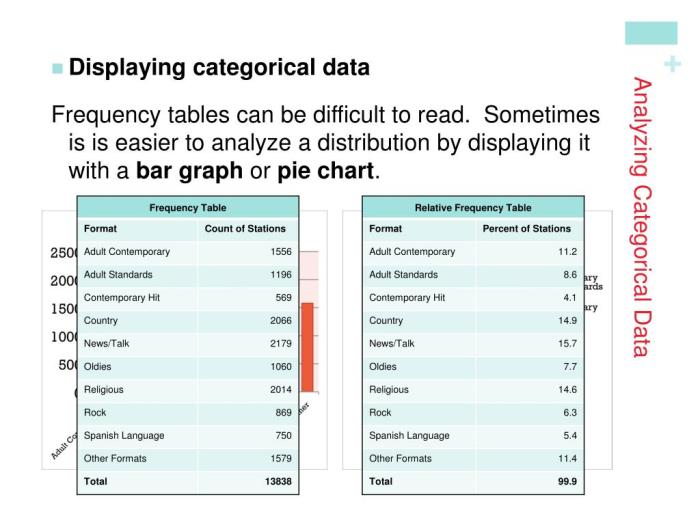Unveiling the intricacies of categorical data analysis, this guide serves as a beacon of knowledge, illuminating the path to understanding the enigmatic world of non-numerical data. Embark on a journey of discovery as we delve into the depths of analyzing categorical data worksheet answers, unraveling the secrets of data preparation, exploratory analysis, hypothesis testing, modeling, and the art of interpretation.
Through a comprehensive exploration of essential concepts and practical techniques, this guide empowers you to navigate the complexities of categorical data analysis with confidence. Prepare to unlock the hidden insights within your data, transforming raw information into actionable knowledge.
Data Preparation
Preparing categorical data for analysis involves several important steps:
- Data Cleaning:Removing errors, inconsistencies, and outliers from the data.
- Data Transformation:Converting categorical variables into a suitable format for analysis, such as binary or dummy variables.
- Missing Value Handling:Addressing missing values in categorical data using methods like imputation or exclusion.
Exploratory Data Analysis: Analyzing Categorical Data Worksheet Answers

Exploratory data analysis techniques help explore and visualize categorical data:
- Frequency Tables:Summarizing the frequency of occurrence for each category.
- Bar Charts:Graphically representing the distribution of categories.
- Cross-Tabulations:Identifying relationships between two or more categorical variables.
Hypothesis Testing
Statistical tests are used to test hypotheses about categorical data:
Chi-Square Test of Independence, Analyzing categorical data worksheet answers
- Tests the independence of two categorical variables.
- Assumes expected frequencies are at least 5 for each cell.
Fisher’s Exact Test
- Used for small sample sizes where the chi-square test is not appropriate.
- Calculates the exact probability of obtaining the observed results.
Modeling

Modeling techniques help analyze and predict categorical data:
Logistic Regression
- Predicts a categorical outcome variable based on a set of independent variables.
- Assumes a logistic distribution for the probability of the outcome.
Decision Trees and Random Forests
- Classify categorical data by creating decision rules based on the values of predictor variables.
- Ensemble methods that combine multiple decision trees to improve accuracy.
Interpretation and Reporting

Interpreting and reporting categorical data analysis results is crucial:
- Correct Interpretation:Understanding the statistical significance and practical implications of the results.
- Clear Reporting:Presenting the results in a clear and concise manner.
- Examples:Using examples to illustrate the findings and their relevance.
FAQ
What is the significance of data cleaning in categorical data analysis?
Data cleaning is crucial as it removes errors, inconsistencies, and missing values that can compromise the accuracy and reliability of your analysis.
How do I handle missing values in categorical data effectively?
Missing values can be imputed using various methods, such as mean or mode imputation, or by creating a new category for missing values.
What is the purpose of a chi-square test of independence?
The chi-square test of independence assesses whether there is a significant association between two categorical variables.